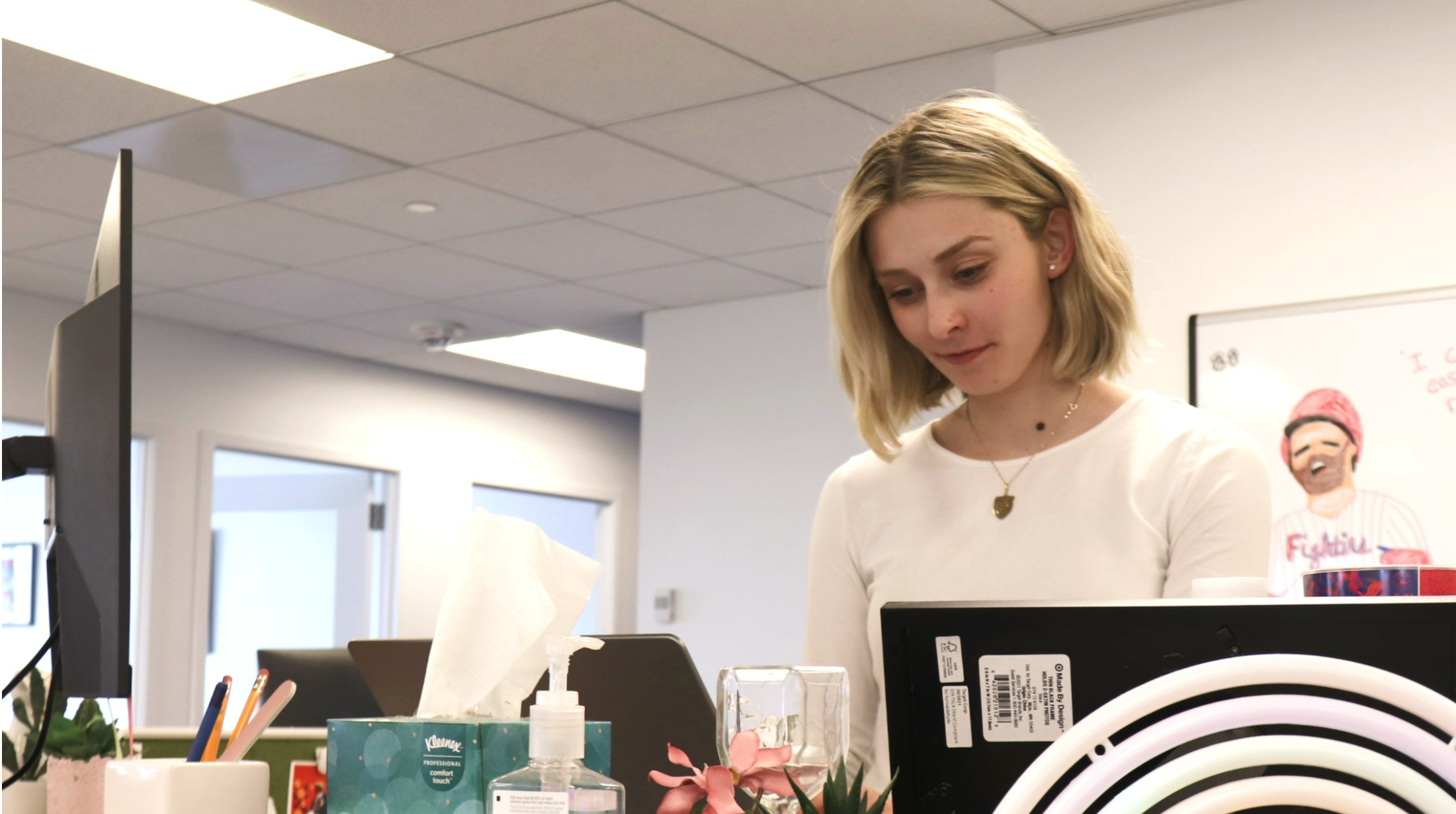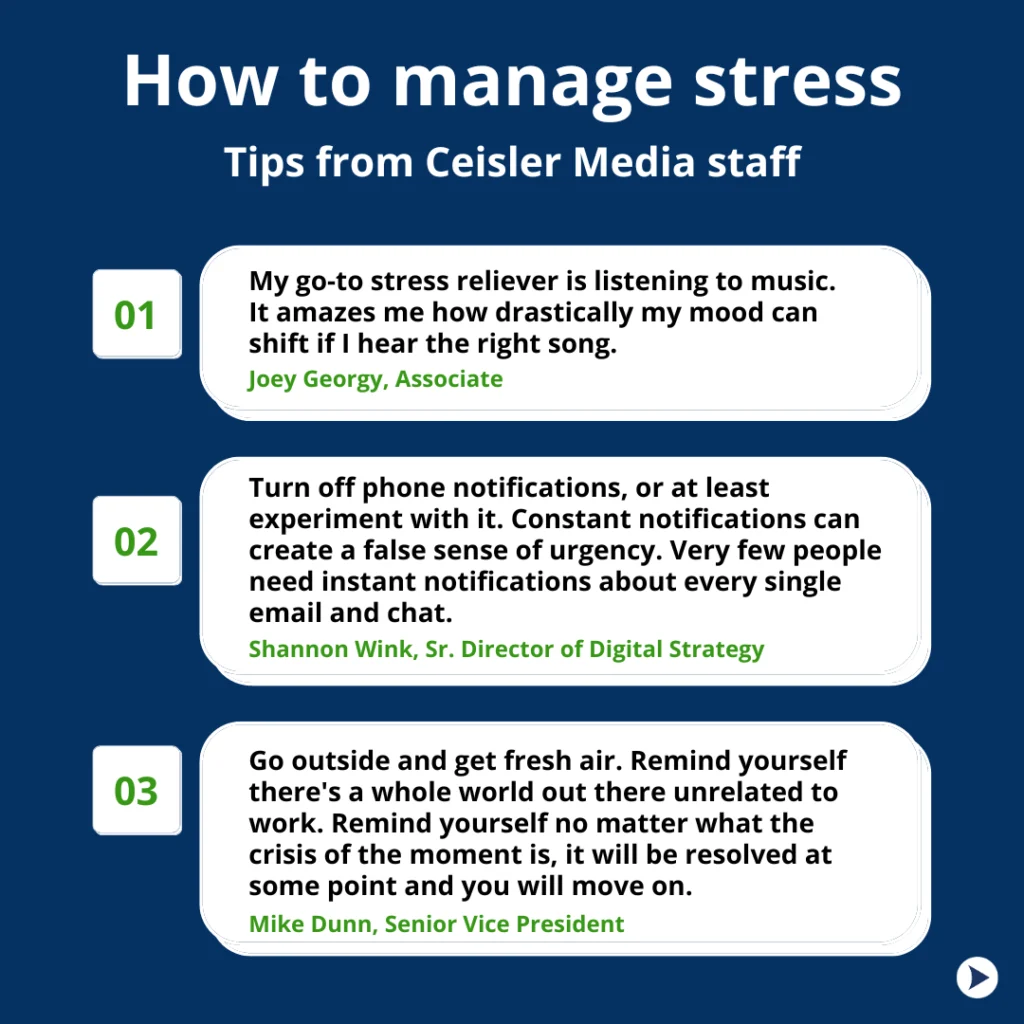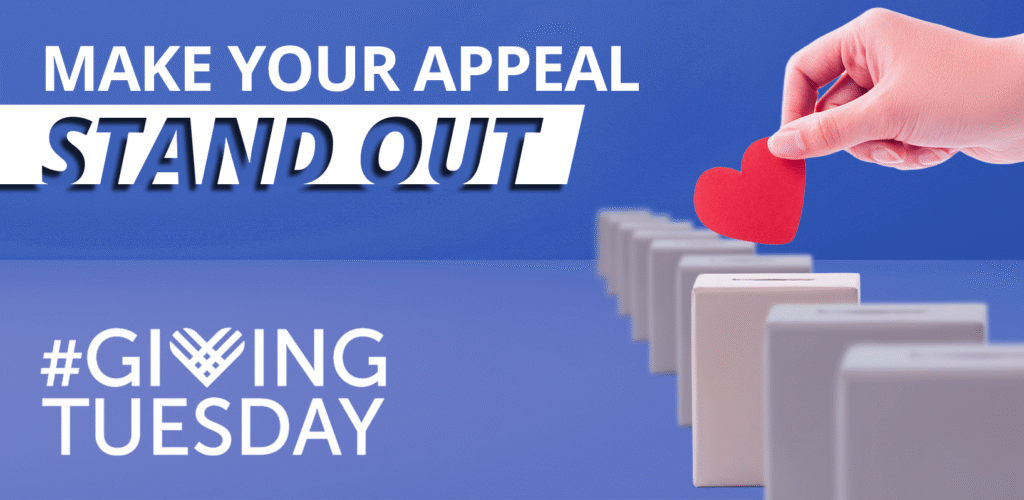
A few months ago, a migraine sent me to the emergency room.
I have suffered with chronic migraines since I was 9. Stress and trauma have followed me around since birth. Being a product of war and coming from a family of refugees continues to be one of the most challenging aspects of my life.
For the past year as I settle into my first full-time job, I’ve been learning in real time how to manage stress while also tackling a demanding workload.
Stress is present in most of our lives, and how we choose to deal with it determines how it will affect our mind and body and our work.
It’s difficult to complete work when you don’t feel your best. If you’re constantly exhausted and avoiding a self-care routine, it maybe be reflected in the work you produce and in your daily interactions with those around you in the workplace.
Deadlines and large workloads are already stressful, so trying to handle important tasks while your body is running out of fuel and motivation is a recipe for disaster.
About 76% of adults say they’ve experienced health impacts due to stress in the prior month, according to the American Psychological Association. I’m only 23 years old, but stress has and continues to greatly affect me and my daily life.
Taking care of yourself first
Anxiety and stress have been rooted in everything I’ve ever known since the beginning, so unlearning cycles has become a huge part of my current life, but I haven’t always been successful.
Many of my health issues have been caused by stress. I am the caretaker for my mother, assisting her and her illness. At the same time, I also deal with my own illnesses.
In the emergency room that day in March, I had a very long talk with one of the nurses that really meant a lot to me.
He asked me about what kinds of stressors I had going on. We talked about my mother’s illness, my role as her caretaker, and my recent postural orthostatic tachycardia syndrome (POTS) diagnosis and the related cardiac scares and tests.
When he found out I’m only 23 years old, he was absolutely shocked at the state I was in.
“You can’t take care of other people if you don’t take care of yourself,” he told me. “Stressing over things you can’t control also doesn’t help anyone and only makes you feel worse.”
The nurse told me to prioritize myself and to focus on everything else after.
He’s right.
Small actions, big impact
Stress can make my body shut down, so I won’t be able to complete my work or responsibilities to the best of my abilities.
As Creative Manager, I spend a large portion of my day sitting down and staring at a bright screen, creating flyers, logos, websites and other graphic design work — all things that can trigger migraines.
Throughout my workday, I have started doing small things that make a huge difference.
For example, going outside for a walk or laying down on my wonderful boss’s couch for 15 minutes gives me time to decompress and breathe.
All it takes is 15 minutes to ground myself again. Then I can return to whatever madness may be happening around me. Incorporating small breaks throughout the day truly can be life-changing and a way to keep myself healthy both mentally and physically.
Your well-being is reflected in everything you do and the work you produce. Struggling to complete projects or produce high-quality work will add more stress, which can become a never-ending cycle.
Taking the necessary steps to take care of yourself might not be easy at first, but it will quite literally save you and your body later.


Samra Smajlovic is a Creative Manager in Ceisler Media’s Philadelphia office.



